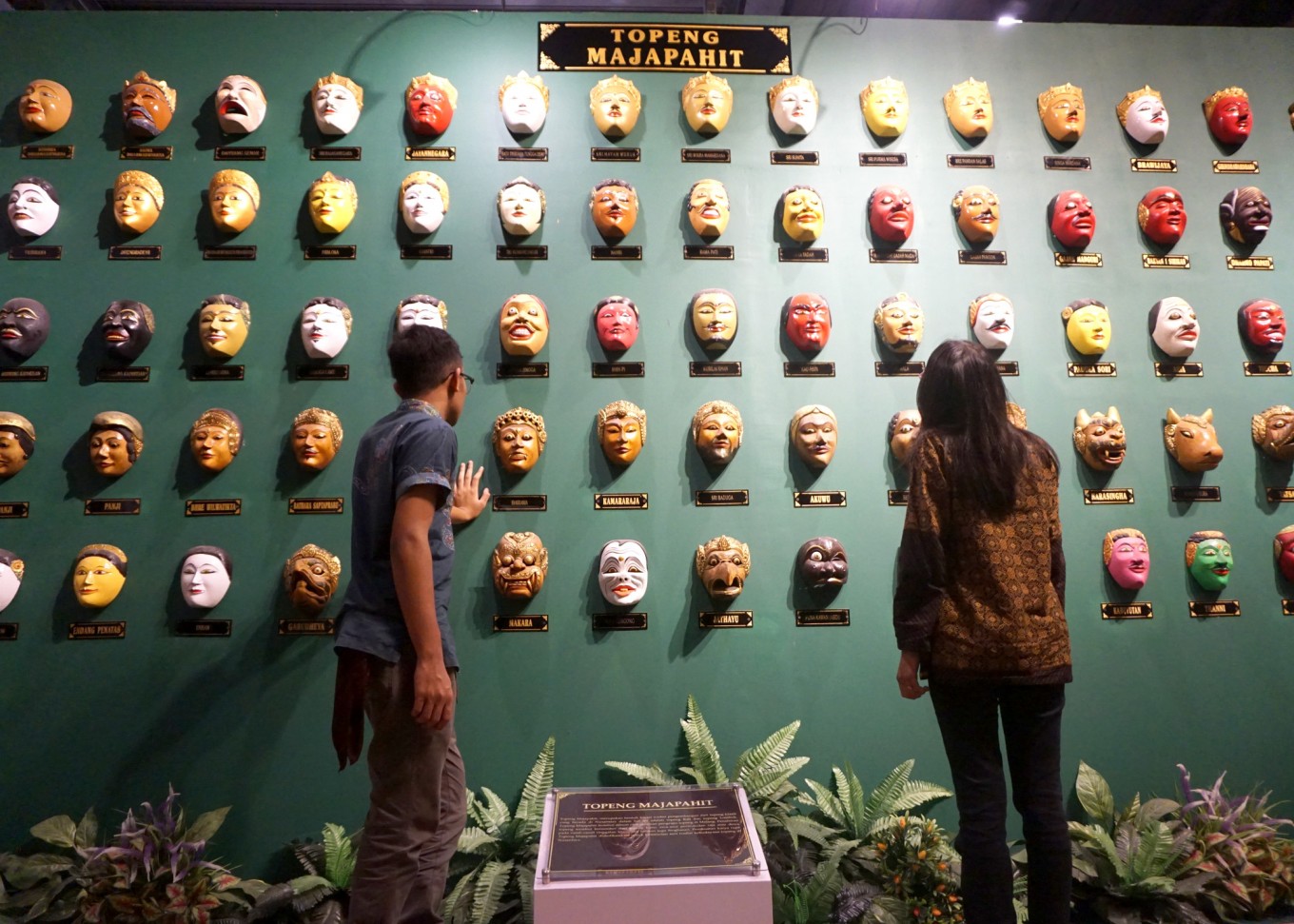Popular Reads
Top Results
Can't find what you're looking for?
View all search resultsPopular Reads
Top Results
Can't find what you're looking for?
View all search resultsMalang museum gives visitors much-needed dose of Indonesian culture
Change text size
Gift Premium Articles
to Anyone
O
pen to the public since mid-2019, the Ganesya Museum in Malang, East Java, serves as an educational attraction that displays historical remnants from the era prior to the Majapahit Kingdom to the beginning of the spread of Islam on Java Island.
The three-story place, which is part of the Hawai Water Park, welcomes visitors every day from 10 a.m. to 10 p.m. with entrance fees starting at Rp 35,000 (US$2.56) per person.
On the second floor, the museum features items from the golden era of the Singosari Kingdom to the Majapahit Kingdom, such as terracotta, urns, beads, kris and gemstones. All are neatly displayed with some stored in glass boxes. Cleanliness is also a priority of the museum, as all visitors are required to take off their shoes.
During our visit on Jan. 16, the smell of incense was strong in the room as it was hosting a temporary exhibition dubbed "Doea Sisi" (Two Sides), which features various mystical and supernatural items, such as jailangkung dolls (from a traditional game), jenglot (a magical amulet in the shape of a small humanoid creature believed to have supernatural powers), other kinds of amulets and black magic-related items. Adding to the frightful atmosphere were human-sized mannequins of vampires, as well as Indonesian ghosts such as tuyul (mischievous child-like spirits) and pocong (shrouded ghosts).
"These items are not meant to scare visitors; we instead want to educate them as [they] are part of our national culture," said a public relations official of the museum, Tri Djuniarto Prabowo, adding that the exhibition would run until late January.
Tri said that a jailangkung was originally a doll used by farmers to get rid of fleas from their paddy fields. It later turned into a traditional game of instinct and intuition known as jailangkung and nyai putut dolls. "So if [the doll] can move by itself, it's not because a spirit has entered it," he said.
Read also: Malang children may save fading art of 'wayang kulit'
Santet, meanwhile, is an example of knowledge abuse. Instead of being used as a medication, it is utilized by many for negative activities. Meanwhile, the tuyul phenomenon, which is usually used by some people to steal money, is said to very much still exist in this millennium.
On the third floor, the museum presents the ethnographic exoticism of Indonesian culture, such as the figures of punakawan (jesters) in pewayangan (shadow puppetry), namely Semar, Petruk, Gareng and Bagong. The figures were chosen as they uniquely represent Indonesia as no other country has such cultural items.
The room also boasts other examples of the cultural heritage of the archipelago, from the tales of Panji -- with various forms and characters, from traditional to contemporary ones -- and gamelan, to reog (masked dance) Ponorogo art, hundreds of Malangan masks and various types of wayang -- wayang golek, wayang krucil, wayang klitik, wayang beber, wayang thengul, wayang gedog, wayang potehi and wayang golek Wali Songo.
Unlike other museums, Tri said the place did not apply a "time tunnel" concept, as it wants visitors to understand more about the various cultural remnants of the country, especially from the Singosari and Majapahit kingdoms, until the Wali Songo (nine propagators of Islam on Java) era, which are displayed in the form of art and cultural activities.
"Our concept is a 'living museum', which provides room for cultural creators, since the spirit of preserving culture will live if there are those who play, watch and create them," said Tri.
The identity of Malang was also clearly highlighted through the masks, as most of them were created by local artists.
The development of the museum itself was largely due to the hard work of two local artists, Yudit Perdananto and Nasai Sabrang Panuluh.
"I really appreciate the trust given by the museum to us to gather 10 mask artists in Malang, so that they can fill the museum with their collections, by reconstructing masks in dynamic forms, as [the items] represent the character of global humans," Yudit recently told The Jakarta Post.
He said he is hopeful that the museum would later focus on children as the main customers and present more interactive features.
Meanwhile, Nasai is known for his active role documenting the works of mask artists and artisans in various villages in the region. He was also contributed photos and narrations on each item. (kes)











